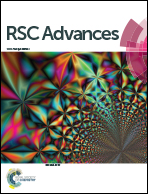Development of nanostructure–activity relationships assisting the nanomaterial hazard categorization for risk assessment and regulatory decision-making†
Abstract
Categorization of the environmental hazards associated with engineered nanomaterials (ENMs) is important for evaluating the potential risks brought by commercialized ENMs. Such a task is so far severely hindered because of an insufficient amount of available toxicity data. As biological assays are costly and time-consuming and also face the ethical issue of animal use, computational modeling such as (quantitative) nanostructure–activity relationships (nano-(Q)SARs) is valued as a potential tool to fill in the data gaps. With this in mind, nano-SARs classifying the ecotoxicity of ENMs were developed in this study with the aims: (i) to examine the availability of nanoecotoxicity data in developing nano-SARs; and (ii) to build nano-SARs that assist the hazard categorization of ENMs for regulatory purposes. Multi-source ecotoxicity data were retrieved, on the basis of which descriptors quantifying the ENM structures were calculated. By employing four extensively used tree algorithms, global nano-SARs across species and species-specific models were derived with significant predictive power. For the LC50 global models, the functional tree, C4.5 decision tree and random tree models all correctly classified more than 70.0% of the samples on training (320 ENMs) and test sets (80 ENMs). The functional tree predicting the toxicity of metallic ENMs to Danio rerio showed accuracies of 93.4% and 100% on, respectively, training (76 ENMs) and test sets (18 ENMs). Descriptors present in the species-specific models were analyzed to discuss the key factors affecting nanotoxicity. With easily obtained descriptors and transparent predictive rules, we believe the developed nano-SARs could assist the expedited review of ENMs' hazards and facilitate better-informed regulatory decisions of ENMs.



 Please wait while we load your content...
Please wait while we load your content...